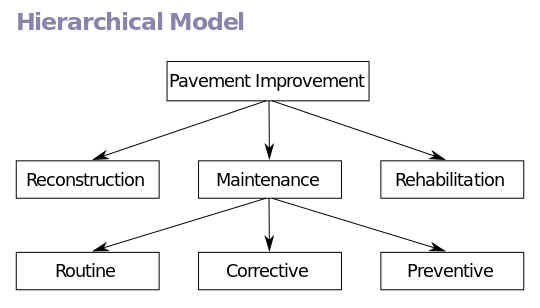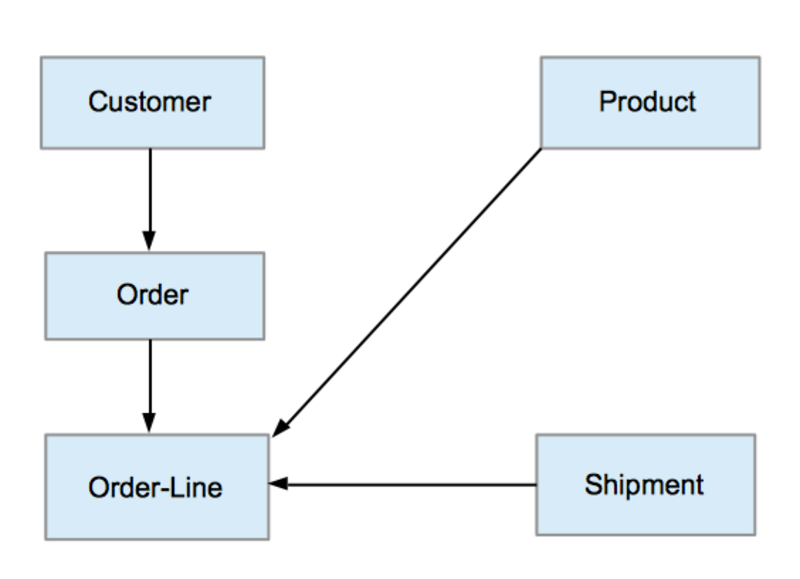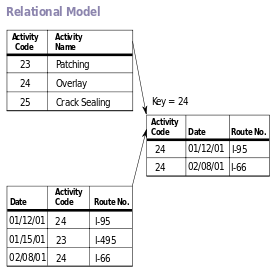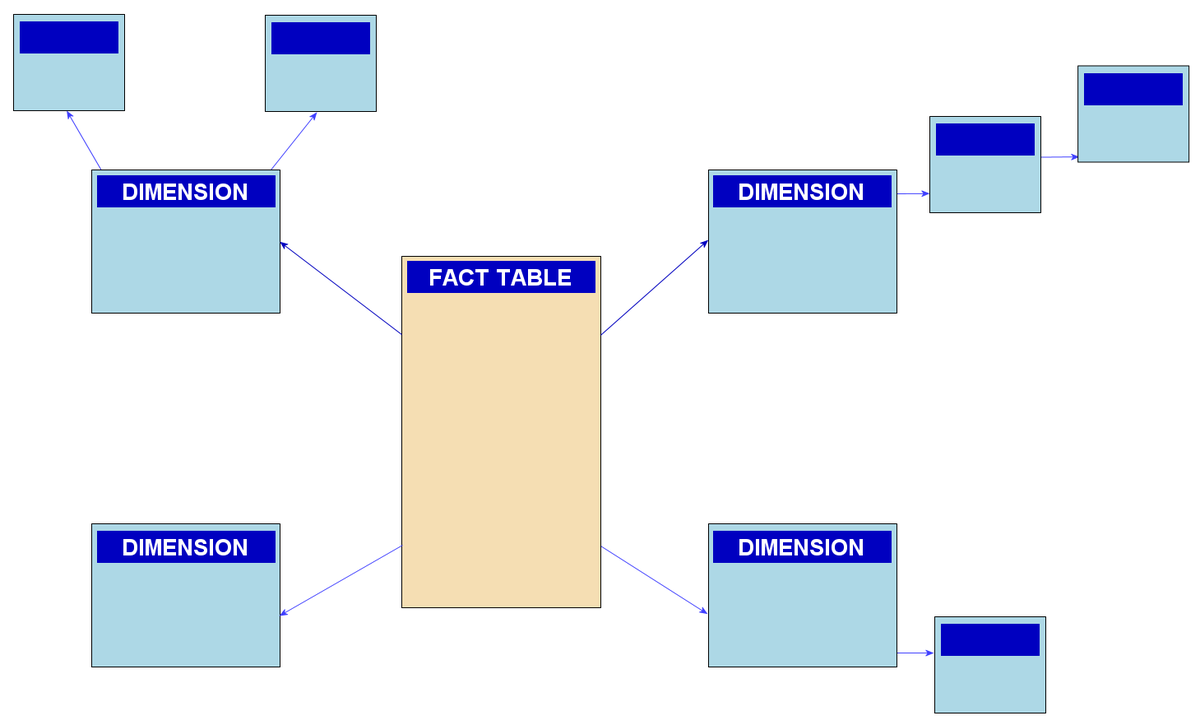Working professionals
Fresh graduates
- Study abroad
- Offline centres
More
8. BCNF in DBMS
16. Joins in DBMS
17. Indexing In DBMS
21. Deadlock in DBMS
29. B+ Tree
31. Database Schemas
Database Schemas
Understanding database schema is crucial if you manage maintaining a database or using data to provide value through apps like business analytics. The schema in DBMS describes the tables, fields, and relationships between them, as well as other data pieces required to precisely access and alter the information contained in a database. It also defines the organization of the database.
A thorough understanding of database schemas not only makes it possible to develop data platforms, including cloud data platforms, more effectively but it can also be used to identify possible problems such as performance bottlenecks, which can affect system functionality, cause downtime and reduce the return on investment from data investments.
Before diving into that, let's talk about what a database is.
What is a Database?
A database is like a cabinet where we keep all kinds of information. Moreover, it can grab simple components like lists of names or get complicated data. A database is usually controlled by a database management system (DBMS). But you know what’s the coolest thing here? The organized data in the database is the most wonderful thing.
Now, let’s begin by defining schema in a database.
What Is Schema In DBMS?
A schema in DBMS is like a blueprint that shows how a database is organized. It also represents all the connected information, including a table, a field, and a relationship between them.
However, the schema does not store the data; it tells the database engine how specific data should be arranged and how they should be related to each other. For instance, it specifies what information each table will possess, like names or ages.
Although this data is stored in the file, it is not organized cleanly. That is when the schema helps you structure the data to make it easier to use and understand.
A good database schema can include things like ensuring that all the data entries are consistently formatted and have a unique identifier for each entry. Lastly, it also defines each table’s columns and what kind of data it can hold.
The size and complexity of the schema can depend on how big the project is. Additionally, it is more helpful to developers because it helps them in planning and organizing the database before the coding starts.
Now, let’s understand the different types of database schema in DBMS.
What are the 3 Types of Database in DBMS?
The database schema in DBMS is categorized into three types:
Physical Database Schema:
Think of this as the blueprint or code for storing the data on the computer's storage system. It's like the technical instructions that tell the computer where and how to store the data, like in files and indexes. The database administrator decides where exactly the data goes in the storage system.
Logical Database Schema:
This is more about the rules and structure of the data rather than its actual storage. It defines things like what kind of data can be stored, how different pieces of data are related to each other, and any rules that need to be followed. Imagine it as the plan for how information is organized in tables and how they are connected.
View Database Schema:
This is a user-friendly version of the database. It defines how users interact with the database without needing to know all the technical details. It's like a simplified interface that lets users work with the database without worrying about how the data is stored behind the scenes.
Now, let’s understand how to create a Schema.
3 Easy steps to create a Schema
You should use “CREATE SCHEMA” to create a schema in each type of database, but each DBMS has a different meaning here. The following section will explain how to create schemas in various database systems.
MySQL:
In a MySQL database, the “CREATE SCHEMA” helps you create the database because “CREATE SCHEMA” is identical to “CREATE DATABASE.” Thus, a schema is a synonym for the Database.
The Oracle Database:
In the Oracle Database, every user already has their schema set up. So, when you use "CREATE SCHEMA," you're not actually making a new schema. Instead, it's a way to show what's already there, like tables and views, and lets you access them without having to use lots of different commands for each thing you want to do.
If you want to actually make a new schema, you would use the "CREATE USER" statement instead.
A SQL Server:
In SQL Server, when you use the "CREATE SCHEMA" statement, it makes a brand-new schema with whatever name you give it.
Now, let’s understand the difference between a Physical database schema and a logical database schema.
Physical Database Schema | Logical Database Schema |
A physical database schema does not include any attribute | A logical database schema includes an attribute |
This contains both primary and secondary keys | A logical database schema also contains primary and secondary keys |
It includes the table name | A Logical Database Schema includes the names of the tables. |
Now, let’s understand the different ways to structure a schema in DBMS.
6 Ways To Structure A Schema In DBMS
There are a number of ways to structure a database schema in DBMS and we should use the most suited schema design to build the database because an ineffective schema design is difficult to manage & consume extra memory and resources.
The choice of schema in DBMS depends on the requirements of the applications. Below are six ways to structure a schema in DBMS. Let’s understand all six in brief.
Flat Model:
It is a 2-D array wherein each column contains the same type of data or information and the elements with rows are related to one another. It is simply like a table or a spreadsheet. Moreover, the schema is efficient for small applications that do not contain any complex data.

Hierarchical Model:
In this model, the data is organized in a parent-child relationship and possesses a tree-like structure. This model contains each record of many children and one parent and is used to craft one-to-many relationships in diagrams such as an organizational chart, but obviously, this might not be as adaptable in a few complicated partnerships.

Network Model
This model and the hierarchical model are identical, having an important difference that is related to data relationships. It allows many-to-many relationships whereas the hierarchical models allow a one-to-many relationship.

Relational Model:
This one is the most common database structure in which data is in the table with rows and columns. Here the tables can relate to each other that is efficient for lots of different applications.

Star Schema:
The star schema in DBMS efficiently stores and analyzes a larger amount of data. This model has a fact table at the center & multiple dimension tables which are connected to is just like a star, in which the fact table consists of numerical data which runs the business processes and the dimension tables consist of dimensions such as a product, time, people, etc.
The star schema structure allows us to structure the data of the Relationship Database Management System.

Now, let’s understand the last structure for database schema in DBMS.
Snowflake Schema:
Similar to a star schema, the snowflake schema consists of a fact table at the center and a multi-dimension table connected with it. However, the main difference between these models is that in a snowflake schema, dimension tables are further normalized in multiple related tables. This model is used to analyze large amounts of data.

Now, let’s understand the benefits of schema in DBMS.
5 Advantages Of Database Schema In DBMS
In DBMS, database schemas are crucial because they provide a framework for efficiently managing and organizing data. Let’s discuss the advantages of database schemas-
- Providing consistency of data: The database schema ensures data consistency and prevents duplication.
- Maintaining scalability: A well-defined and well-structured database helps to add new tables and maintain a larger amount of data in any growing table.
- Performance improvement: A database schema DBMS leverages data retrieval, which reduces operational time on the database table.
- Easy maintenance: A schema in database DBMS helps to maintain an entire database without affecting the remaining data.
- Database Security: The schema of a database schema DBMS helps you keep the whole database in good shape without causing problems for other parts of it.
Now, let’s understand if a Database Instance and Database Schema are the same.
Is Database Instance Or Database Schema Similar?
Database schema and database instances are related but different concepts in the world of databases.
Think of the schema as a blueprint for organizing the database. It's like a plan that lays out all the tables, fields, and relationships, but it doesn't hold any data itself.
Now, the instance is like a snapshot of the database at a specific moment in time. It's the actual data stored in the database at that moment. Unlike the schema, the instance can change over time as data gets added, updated, or removed.
So, while the schema stays the same and defines the structure of the database, the instance can change as data is modified. However, the database management system (DBMS) makes sure that any changes to the instance still follow the rules set by the schema.
Wrapping Up!
A database schema in DBMS acts like a blueprint to organize and manage the data in a database. A schema helps you to maintain data consistency, support growth, and improve its performance. Choosing the right schema design and understanding its types such as a physical and logical schema and different models like flat, hierarchical, network, etc. can help you efficiently structure the data.
Before we call this an end, we have a few frequently asked questions that can help you upskill your knowledge and learn about schema in DBMS.
FAQs
1. What are a Schema and Instance?
Schema refers to the overall structure of a database, while an instance is a specific set of data stored within that structure.
2. What is called Schema?
In database terms, a schema is known as the overall structure or design of a database.
3. What is a Schema in SQL?
In SQL, a schema is a collection of database objects, such as tables, views, and procedures.

Author|310 articles published


upGrad Learner Support
Talk to our experts. We are available 7 days a week, 10 AM to 7 PM
Indian Nationals
Foreign Nationals
Disclaimer
The above statistics depend on various factors and individual results may vary. Past performance is no guarantee of future results.
The student assumes full responsibility for all expenses associated with visas, travel, & related costs. upGrad does not .






















-7f4b4f34e09d42bfa73b58f4a230cffa.webp&w=128&q=75)
-ae8d039bbd2a41318308f8d26b52ac8f.svg)



